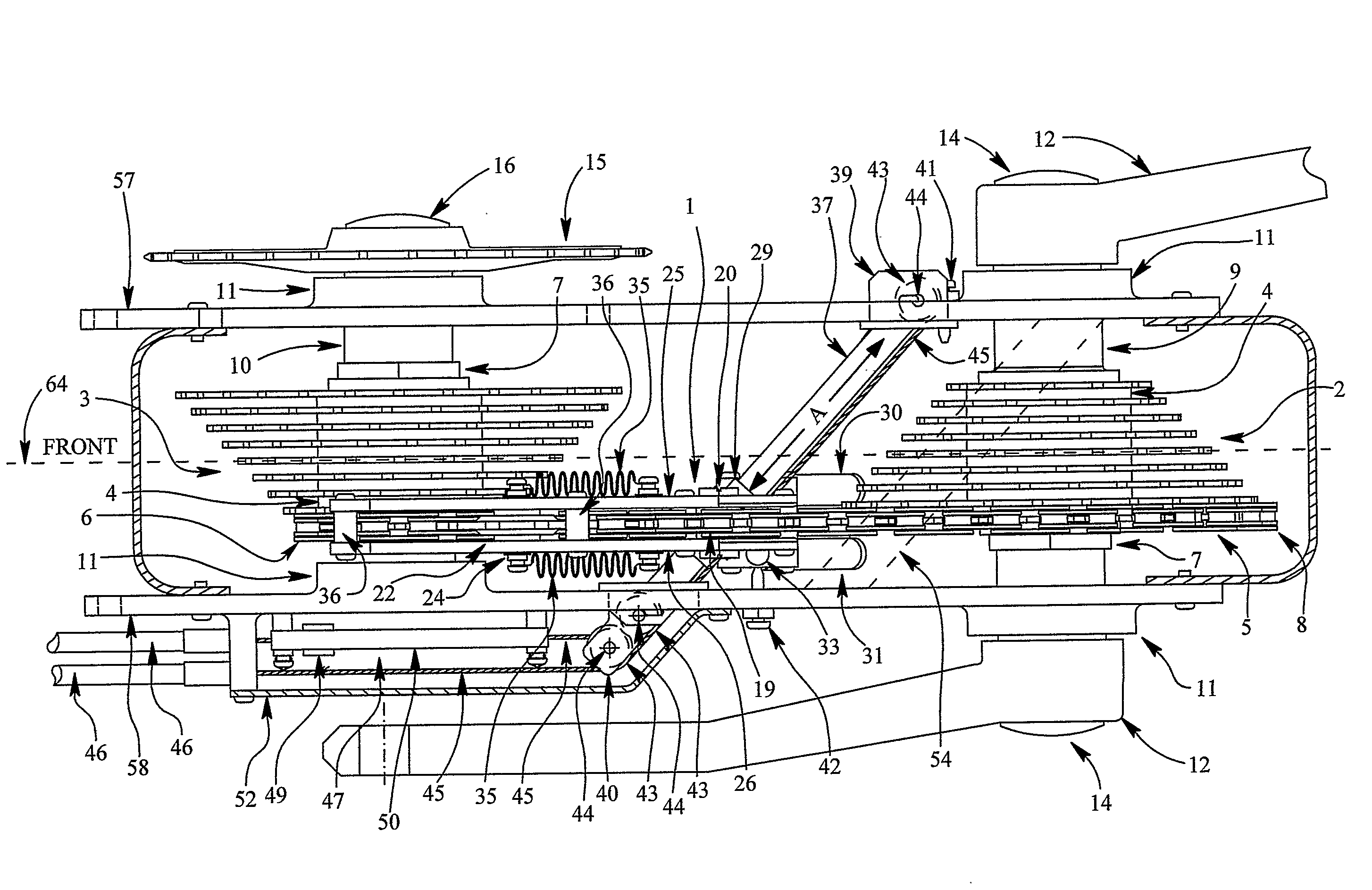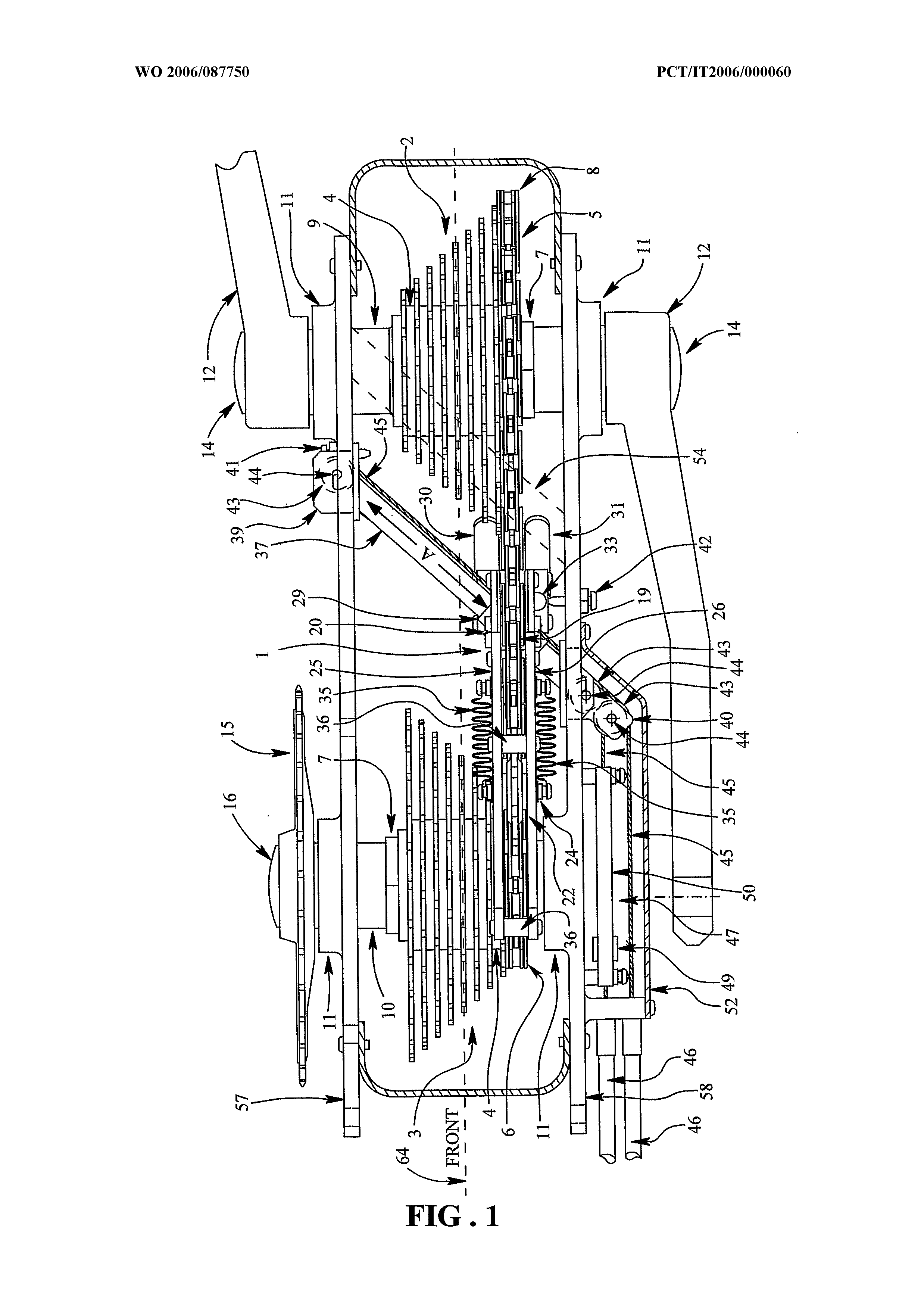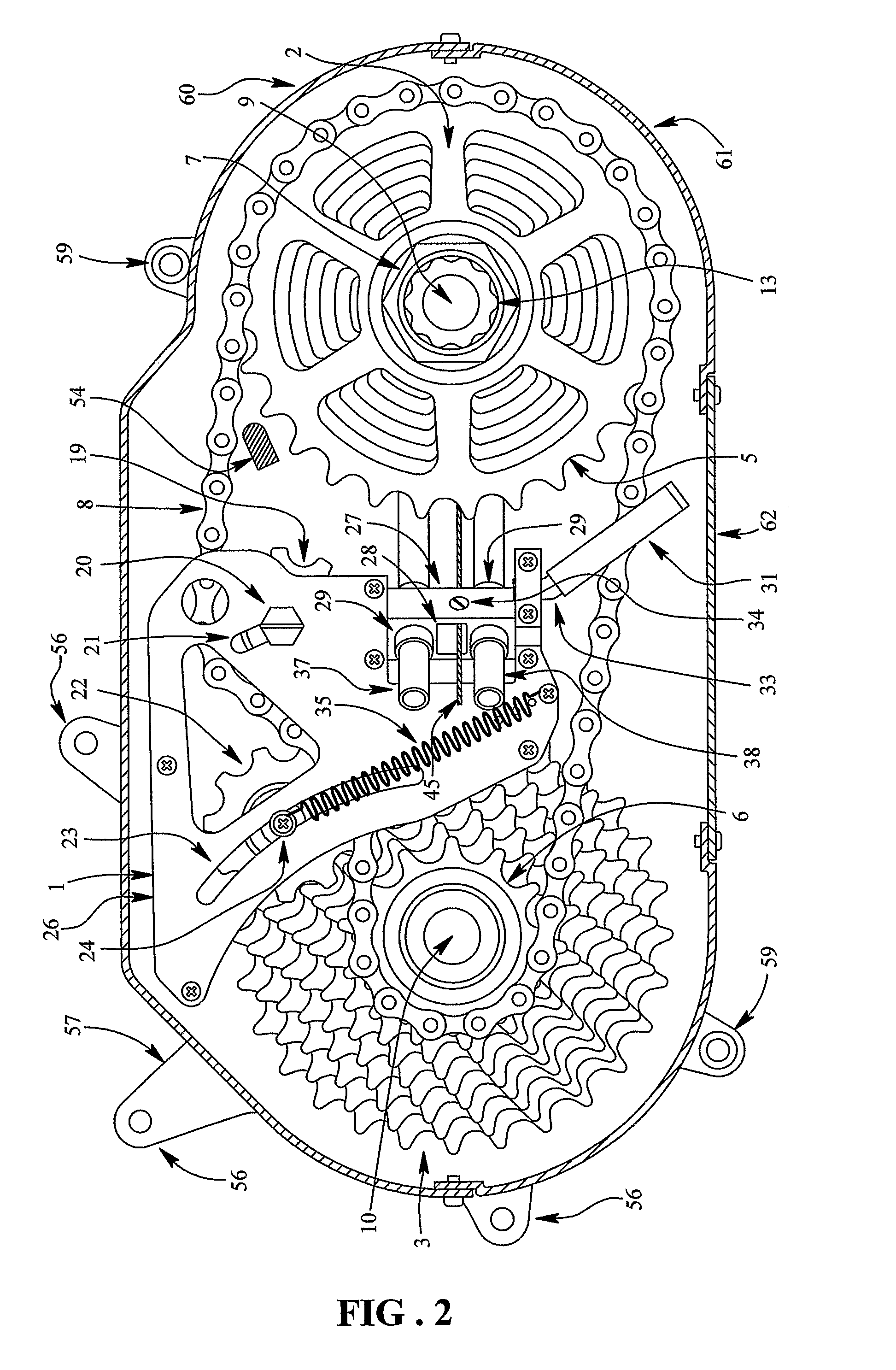[0004]The Derailleur Case for Bicycles is completely different from the traditional one because it does not include the same elements that characterize the traditional
system, such as: the chain cage pivot, the front and the rear derailleurs for the cog set on rear wheel. Whereas, in the new invention, mentioned above, we have the gear changing inside a case, which protects all the components of the system from mud and accidental collisions. The case can be obtained by two parallel and longitudinal plates, one on the right (57), the other on the left (58), where the bearing housing, the axles holes, the frame supports and etc. . . . are located in. The devices in-between the two plates are closed in an easy removable plastic case that is divided into two parts (60) (61); a very small door (62), positioned on the lower part of the gear box, makes it easier to test and to lubrificate it. You can
exploit the box by putting it in the bike frame assembling all the components into it, or, just by leaving its components exposed for no off road purposes. Externally, on the right side of the gear box, there is the secondary transmission composed of an outboard chain ring (15) and a secondary
roller chain (17) linked to the rear cog (18) assembled on the rear wheel of the bike (63). The biker is completely free to choose the
diameter and the numbers of teeth on the cogs of the secondary transmission, both to adjust the gear for the variety of its use so as to obtain the best performances of the bike. Changing gears generate a changing in the revolution between the primary axle (9) and the secondary axle (10) linked to the rear wheel through the secondary transmission, allowing the user to go up and down like a common mountain bike. The result of the percentage increase during the changing gears is always correct just by a twist shifter (53). So, it's not possible, as in the traditional bicycle system, to make any mistakes. In the above-mentioned invention, the gears are changed with only one twist shifter (53) on the handlebar, that operates on the derailleur (1), specifically realized for this purpose, which, moved sideways and running on the slides (37) (38), shifts the primary looping ring roller chain (8) between the primary (2) and secondary cog sets (3), oppositely set the parallel rotation axles. So, it is the particular position of the primary and secondary cog sets (2) (3) which renders it possible to obtain a revolution changing between the primary and secondary axles. The derailleur (1) has been projected to move the primary chain (8) on the primary and secondary cog sets at the same time. The components of the derailleur that shift the chain are: the floating derailleur
pulley (22) that drives the chain on the secondary cog set (3), and a couple of rollers (30) (31) that drive the chain an the primary cog set (2). The floating
pulley (22) tightens the primary chain with two springs (35), so it is possible to compensate the difference of the cogs' diameter during gears changing. A non-floating derailleur
pulley (19) drives the chain out the primary cog set (2). The non-floating pulley is adjustable and it is possible to move it for a bit of millimetres on a small slot (21), compensating for the extension of the chain, due to its wear. The primary cog set (2) is assembled on the pedal axle called primary axle (9). The secondary cog set (3) derives its movement from the primary cog set (2) by means of the primary chain (8); the outboard chain (15) is assembled on the right side of its axle, called secondary axle (10). By means of the secondary chain (17), the outboard chain (15) activates the rear cog (18) of the secondary transmission assembled on the rear wheel hub of the bike (63). The primary and secondary cog sets have the same number of cogs, which is equivalent to the number of gears available. Thanks to its particular structure, The Derailleur Case For Bicycles allows a very quick changing of gears, compared to the traditional gear, because just with a twist shifter, the chain takes less time to move up and down the cogs. As far as the above mentioned invention is concerned, there is neither the front nor the rear derailleur as in traditional gears, which have to be synchronized by the biker to avoid the drop-out of the chain. Furthermore, with this system, the time employed for the chain to pass from the longer to the shorter
gear ratio is shorter, because, thanks to the pulley, the primary chain does not shift from its housing and during gear changing, the two derailleur sliding blocks that drive it keep it in line with the cogs. At the same time, the derailleur in The Derailleur Case For Bicycles is an integrated device and independent from the other components as the primary and the secondary cog sets, and is linked to them just by means of the primary chain.
 Login to View More
Login to View More  Login to View More
Login to View More 


